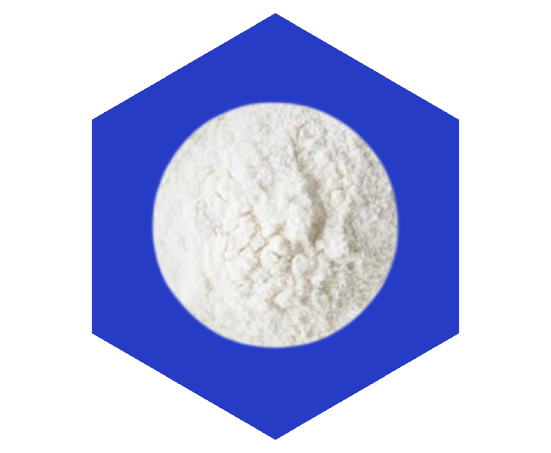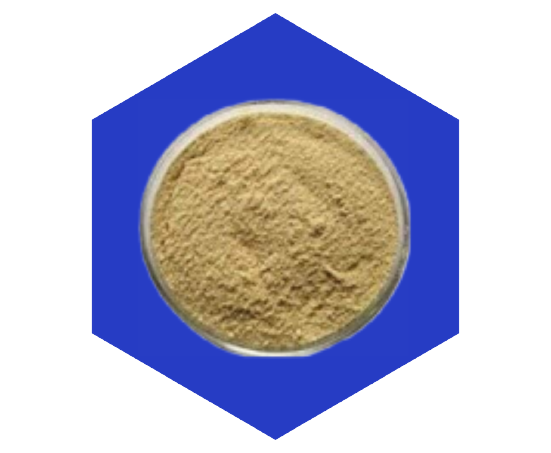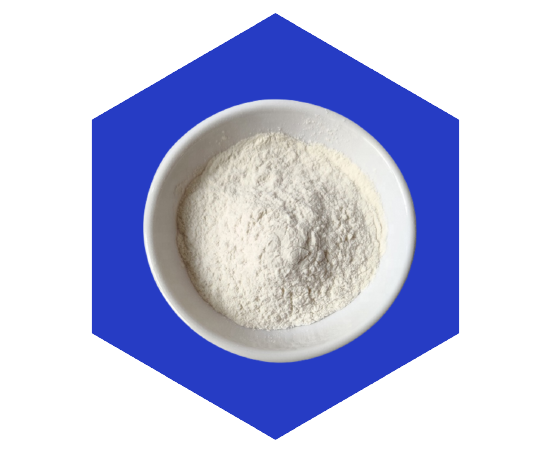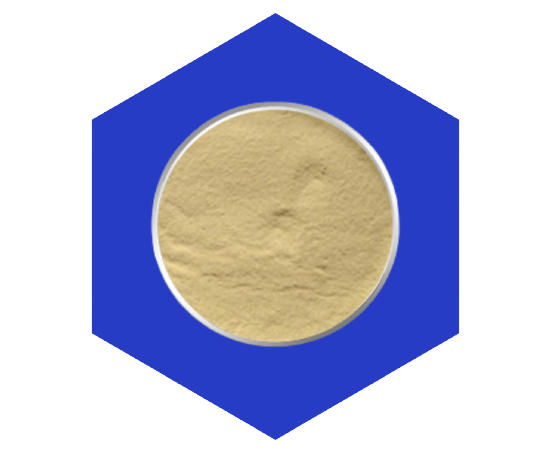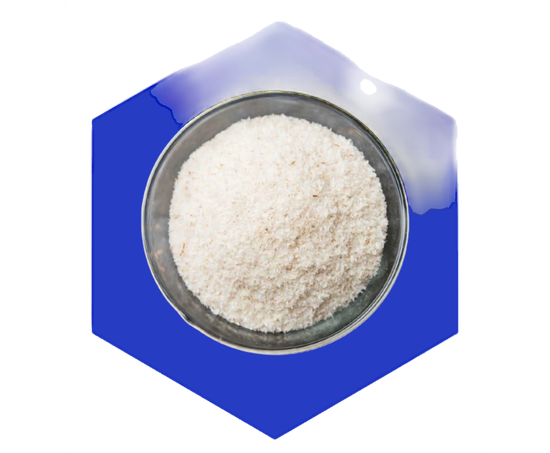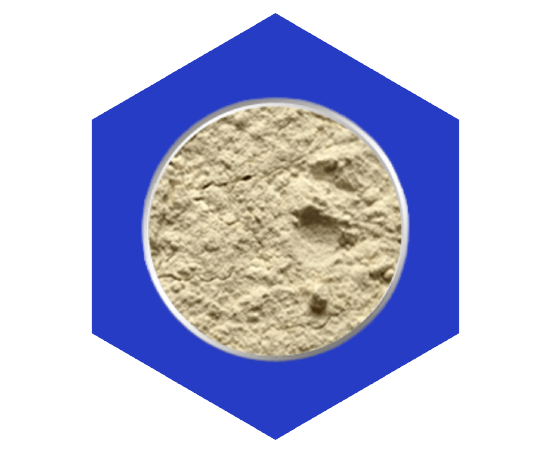Tasty & fresh
Locust Bean Gum
We are proud to announce our exclusive representation as suppliers of L.B.G. products in the Indian food processing market. We are introduce totally bios and organic L.B.G. product for your food processing Business A “flour” or “powder” made from the fresh mature pod’s seed of carob tree. Which is currently popular with natural food advocates
Locust bean gum (LBG, also known as carob gum, carob bean gum, carobin) is a galactomannan vegetable gum extracted from the seeds of the carob tree and used as a thickening agent (gelling agent) in food technology. It is widely utilized as an additive in various industries such as Food, Pharmaceuticals, Paper, Textile, Oil Well Drilling and Cosmetics. Industrial applications of LBG due to its ability to form Hydrogen bonding with water molecule
Locust bean gum occurs as a white to yellow-white powder. It consists chiefly of high- molecular-weight hydrocolloidal polysaccharides, composed of galactose and mannose units combined through glycosidic linkages, which may be described chemically as galactomannan. It is dispersible in either hot or cold water, forming a sol having a pH between 5.4 and 7.0, which may be converted to a gel by the addition of small amounts of sodium borate. Locust bean gum is composed of a straight backbone chain of D-mannopyranose units with a side-branching unit of D-galactopyranose having an average of one D-galactopyranose unit branch on every fourth D-mannopyranose unit.
The bean, when made into powder, is sweet—with a flavour similar to chocolate and is used to sweeten foods and as a chocolate substitute, although this carob powder is produced from the fruit pod after removal of seeds, while the gum is produced from the seeds themselves. It is also used in pet foods and inedible products such as mining products, paper making, and to thicken textiles. It is used in cosmetics and it can also be used to enhance the flavour of cigarettes. Shoe polish and insecticides also have locust bean gum powder as an additive. It is soluble in hot water.
- Superiority of L.B.G. product over other’s thickener and hydrocolloids.
L.B.G. is a specially thickener and suspending agent with exceptional stability and compatibility with xanthan like ingredient. Because the L.B.G. is a totally natural and bios product, while xanthan CMC, gellan gum and genugel are microbial polysaccharides. Furthermore Locust Bean Gum is produce from Carob pods without any chemical treatment, while xanthan and others thickener are produce by the microorganism. X compestris, originally isolated from the rutabaga plant. There for the L.B.G. product is superior than any microbial gum produce by microorganism X compestris fermentation system. There are no side effect or no any health problem of L.B.G. in food use.
- STRATEGIC OVERVIEW OF L.B.G. GUM:
L.B.G. is one of the oldest gums in business world. The modern commercial history of L.B.G. begins during the 1960’S when the related galactomannan guar gum powder of good quality become available in large quantities to the international market the dramatically lower price of guar and its cold water solubility (L.B.G. hydration requires 90°C) eliminated many market of L.B.G. Locust Bean Gum continued to be prized for the special flow properties it imparts to solutions its enhancement of freeze-thaw stability, and above all, its superb synergies with other gums, notable carrageenan and xanthan, in the use the most important application are in ice-cream, cream cheese and blends with xanthan, carrageenan or guar.
- USE OF L.B.G.(F.D.A. APPROVED):-
L.B.G.:- Is a white powder, tasteless and odorless hydrophilic and chemically inactive.It has an ampholytic character and gives high viscous solution due to these properties L.B.G.
Is used in the following Industries:
- Ice-cream. When L.B.G. is used, ice-cream products have a spongeous consistency and become smoother and more elastic also L.B.G. increases overrun.
- Cheese and tube-cheese to prevent syneresis. The addition of 0.5-0.75 L.B.G. to cheese of high water content gives excellent results.
- Salads salad dressing, mustards, dietary foods, bottled sauces, liquid and / or dried soups and juices, mayonnaise, sour milk, desserts, cream cheese, processed cheese, fish products, canned fruit and vegetables, pickled fruit and vegetable, ketchup, aromatic sauces, marmalades, juice, soft drinks, baby food and pastry.
- Meat (sausages etc.) as a binder and lubricant. Due to its hydrophilic properties it withholds water while preventing evaporation thus helping products to maintain a constant appearance without any loss of weights.
- Jellies, in combination with pectin’s, thus enhancing the action of the pectin and giving higher elasticity and stability.
- Confectionary, as a binder.
- Pet food Industries and excellent syneresis and gel strength when combined with carrageenan.
- Pharmaceutical Industries and cosmetics, as a thickening and stabilizing agent in various solution and dispersions. It is also used in the production of tablets as a binder and disintegrator. It prevents the crystallization of diluted solid substances.
Use : The locust bean gum is used in the food industry as an additive in the Following.
Products : Ice-cream, Desserts, yoghurt sauces, Mayonnaise, Ketchup, Diet Products, Marmalades, Jams, Soups, Desserts and others.
Locust bean gum can be used in for e.g.Add % locust bean gum off total mass.
| 0.15/0.25 | Ice-cream | Heat shock resistant, smooth meltdown |
| 0.10/0.30 | Milk product | Contribute body mouth fine texture |
| 0.25/0.35 | Cheese | Excellent body and structure |
| 0.20/0.40 | Confectionary | Minimize syneresis |
| 0.20/0.40 | Fish products | Avoiding breakage |
| 0.10/0.40 | Beverages | Improve body |
| 0.30/1.00 | Sauces | Stabilize oil and non oil sauces |
| 0.30/0.60 | Canned meet | Maximize gel strength |
| 0.10/0.50 | Cereal product | Better texture, less crumbing |
| 0.20/0.50 | Frozen food | Improve freeze thaw stability |
| 0.30/1.00 | Dietary food | Replace gluten, low calorie ingredient |
4. LOCUST BEAN GUM:
Locust Bean Gum is the off whitish powder obtained from grinding the endosperm of the seeds of ceratonia siliqua. It consists mainly of galactomannan-type polysaccharides, with a galactomannose ration of about 1:4 unlike guar gum (produced from cyamopsis tetragonoloba), locust bean is only partially soluble in cold water, but it has better water retention characteristics than guar. Solution of locust bean gum have relatively high viscosity at low concentration. Dispersions of gum do not gel, well unless it is in combination with other gums. Its strong synergistic action in the presence of other gums contributes to it having wide applications where good stabilizing, thickening and emulsifying properties are required.
5. USE OF LBG:
Its use as a food additive is the most important outlet for locust bean gum. In European community legislation it has an “E” number of E410. It is employed in a wide range of products, among the most important of which are ice cream, baby foods and pet foods. In this applications its texturizing properties are of great value and hard to replicate using other gums, in ice-cream the gum slows the rate of meltdown and improves its storage properties.
Locust bean gum is an important constituent of many soups, where its property of fully dissolving and thickening only at high temperature is critical. In sausage products such as salami and bologna it acts as a binder and lubricant. Other food uses include the manufacture of soft cheese, bakery products, pie filling, powdered desserts, sauces and salad cream, and dairy products other than ice-cream.
- Locust Bean Gum- Function, Examples use level (%)
- Its strong synergistic action in the presence of other gums contributes to it having wide applications where good stabilizing, thickening and emulsifying properties are required.
- Locust bean gum is an important constituent of many soups, where its property of fully dissolving and thickening only at high temperatures is critical.
- In sausage products such as salami and bologna it acts as a binder & lubricant.
- Other food used include the manufacture of soft cheeses, bakery products, pie fillings, powdered desserts, sauce and salad creams and dairy products other than ice cream.
- It is employed in a wide range of products , among the most important of which are ice cream, baby foods and pet foods. In this applications its texturizing properties are of great value and hard to replicate using other gums, in ice cream the gum slows the rate of meltdown and improves its storage properties.
| A | Function | Example use | Level (%) |
| B | Adhesion | Glacis, juices | 0.2-0.5 |
| C | Binding agent | Pet foods | 0.2-0.5 |
| D | Body agent | Dietetic Beverages | 0.2-1.0 |
| E | Crystallization Inhibitor | Ice cream, frozen foods bread | 0.1-0.5 |
| F | Clouding agent | Fruit drinks, beverages | < 0.1 |
| G | Dietary fiber | Cereals, bread | 0.2-0.5 |
| H | Foam stabilizer | Whipped topping, Ice cream s, confection | 0.1-0.5 |
| I | Gelling agent | Pudding, desserts, confection | 0.2-1.0 |
| J | Molding | Gum drops, Jelly candies | 0.5-2.0 |
| K | Protective colloid | Flavor emulsions | 0.2-0.5 |
| L | Sterilizing agent | Salad dragging, Ice cream | 0.1-0.5 |
| M | Suspending agent | Milk chocolate | < 0.1 |
| N | Swelling agent | Processed meat products | 0.2-0.5 |
| O | Synergistic agent | Soft cheeses, Frozen foods | 0.2-0.5 |
| P | Thickening agent | Jams, Pie fillings, sauce baby food | 0.2-0.5 |
T. As such or as component in an appropriate blend.
U. Depending on degree of polymerization or viscosity of L.B.G.
THE AQUEOUS SOLUTION OF L.B.G.:
| A | Are not NewTonian liquids. |
| B | Have an impholitic character. |
| C | Are used as dispersion phases For many organic and inorganic substances. |
| D | The ph of 1% solution at 25°C is 7. |
TYPICAL COMPOSITIONAL ANALYSIS :
| PER 100 GRAMS. | |
| Calories (kcal) | 39.0 |
| Protein (g) | 6.8 |
| Carbohydrate (g) | 78.6 |
| Fat (g) | 1.4 |
| Dietary Fiber (g) | 78.6 |
| Moisture (g) | 13.0 max |
| Ash (g) | Ash (g) |

